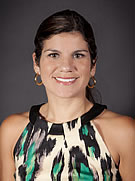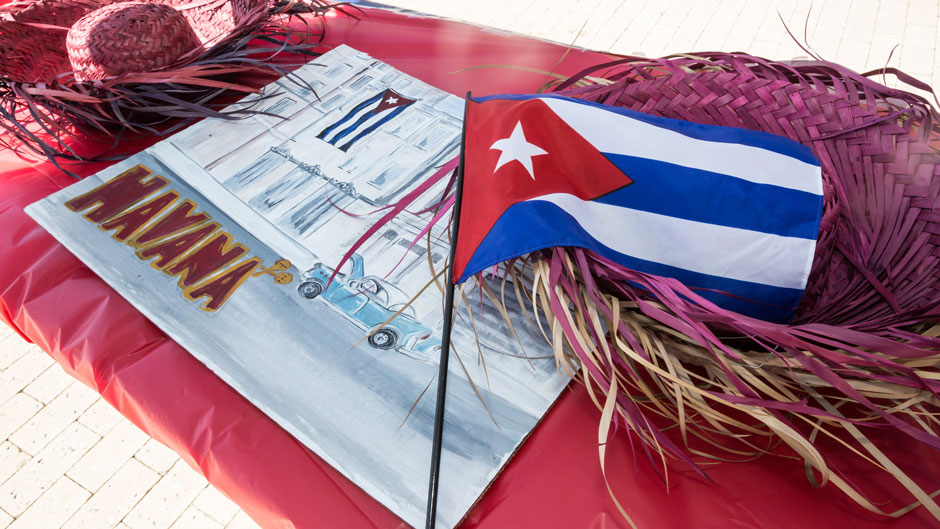 On Nov. 25, when I heard the news of Cuban leader Fidel Castro’s death, I did not feel any sense of sadness, relief or joy. Instead, as a daughter of Cuban exiles, I experienced a mix of all those emotions.
On Nov. 25, when I heard the news of Cuban leader Fidel Castro’s death, I did not feel any sense of sadness, relief or joy. Instead, as a daughter of Cuban exiles, I experienced a mix of all those emotions.
Children of Cuban exiles – the diaspora community of Cubans that left the island after Castro’s 1959 revolution – have lived in a constant state of alienation, loss, anger, pity and love for those Cubans that remained on the island.
Today, I am a scholar of religion. I study how the trans-Atlantic slave trade, the formation of the Cuban Republic and the 1959 Cuban Revolution have shaped the history of the island. In all of these moments, religion has played a key role in the construction of Cuban identity. I also see how Castro’s beliefs shaped the identities of those who left the island, but also of those Cubans who were left behind.
So, how can we look at Castro’s legacy today, particularly from the way he shaped the religious identity of Cuba?
History of religion in Cuba
To tell the story of Cuba’s transformation, let us first look at the arrival of Catholicism and African religions as result of the Spanish colonization in the 15th century and trans-Atlantic slave trade, which began in the 16th century.
Over a period of time these religions were transformed: For the majority of Cuba’s history, the Catholic Church remained closely tied to Spanish colonialism. After Cuban independence in 1898, this allegiance is what made the Church suspect in the eyes of many Cubans, as it was seen to be a relic of the Spanish colonial past.
Afro-Cuban religions also suffered during colonization and in the early years of the republic. African diaspora religions were often caricatured as demonic.
Under Castro’s rule, Cuba was for decades a self-declared atheist state where Christians were persecuted and marginalized. Nonetheless, the Church played a significant political role: Until its dismantling, it exercised considerable influence through the educational system.
Castro himself was educated by Jesuits, citing their teachings as a source for his sense of discipline and justice.
But in 1961 he dismantled the Catholic school system, arguably where Catholicism held its greatest influence on Cubans since many nonpracticing Catholics send their children to Catholic schools. Castro seized Church properties and exiled priests and nuns.
Castro, atheism, religion
Castro’s relationship with religion, however, was far more complex than the rejection of his Jesuit past and the alienation of religion throughout his rule.
The 1985 book “Fidel and Religion,” a collection of interviews by activist and theologian Frei Betto, reveals that Castro had a much more positive relationship with the Catholicism of his youth.
He visited Pope John Paul II in the Vatican in 1996 and went on to receive three pontiffs on the islands. In fact, Cuba has the honor of being the only nation in Latin America to be visited by the last three pontiffs.
In a 1998 speech Castro aligned the teachings of Jesus with those of his own, when he claimed,
“If instead of being born and elaborating his ideas when he did, Christ had been born in these times, you can be sure – or at least I am – that his preaching would not have differed much from the ideas or the preaching that we revolutionaries of today try to bring the world.”
Religion thrives in Cuba today
In 1992 the Cuban Constitution was amended to declare it a secular state. It was no longer an atheist Republic.
Today, religion on the island, like Cuba itself, is much more intricate than the Catholic Church. Afro-Cuban religions such as Santería, spiritual practices such as “Espiritismo” (Spiritism) and other practices that came as a result of the fusion of different faith traditions overwhelmingly mark the religious landscape in Cuba.
Our Lady of Charity, the patron saint of Cuba, remains one of the most prominent and visible symbols of Cuban identity of the island and in the diaspora. Evoked in independence struggles against Spain in the late 19th century, Our Lady of Charity retains a prominent place in Cuban Catholicism, Santería and other popular religions. She reveals the complexity and cultural coming together of the Cuban people.
In spite of its history of marginalization under the Castro regime, today the number of practicing Christians on the island is growing. Practitioners now attend church without fear of retribution, and there is a growing presence of Protestant Christianity on the island.
In more recent history, Afro-Cuban religions have come to be practiced in a more public manner and have been embraced by the government as a form of popular folklore.
Castro and religion
Castro will be buried on Dec. 4, the feast day of St. Barbara – blended in the Afro-Cuban faith with Changó, the lord of lightning and thunder and the symbol of male power and sexuality.
The feast day of St. Barbara is one of the most significant Cuban religious feast days. In the Afro-Cuban faith, Changó is one of the most popular “orishas” (supernatural beings) on the island. St. Barbara is his Catholic mask, one of the most popular saints. In colonial days, slaves would mask their beliefs in orishas by marking them with Catholic imagery and rituals.
In my view, the choice of this date for Castro’s burial is not an accident.
Castro’s ashes will be interned in Santa Ifigenia Cemetery in Santiago de Cuba – a place of religious and national significance. This is the place where Cuban liberator José Martí rests, which is also home of the Shrine to Our Lady of Charity. Martí is a Cuban national hero, beloved by Cubans both on and off the island. He is considered the apostle of Cuban independence.
Castro will be a permanent part of the landscape of the island, regardless of Cuba’s future.
A closure in death
So, what does this all mean to Cuban exiles?
Many have asked me why the response of the Cuban-American and Cuban exile community has been so joyous and so public. My short answer is that through his death, Fidel Castro has given millions of Cuban exiles and Cuban-Americans the one thing we have not had: closure.
I do mourn that my mother did not live to witness his death, and that my father, suffering from a stroke in a nursing home, does not realize this moment is happening.
For me, his years are a painful reminder of the 10 years my mother spent without seeing her parents and of the agony of my paternal grandfather’s death on the island when his wife and children were here in the United States. That raw pain, anger, grief and frustration simultaneously unites and divides Cuban across the globe.
I believe we can now begin to heal, and more importantly we can reconcile as a people who transcend the shores of an island and the politics of one man.
Michelle Gonzalez Maldonado is professor of Religious Studies, University of Miami College of Arts & Sciences.

